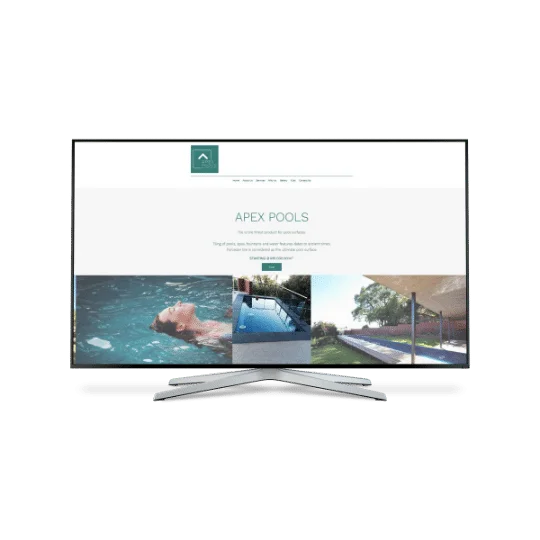The Essentials of Efficient Website Design for Beginners
Effective internet style is a diverse self-control that substantially impacts customer interaction and fulfillment. For beginners, realizing the fundamentals-- such as understanding customer experience, selecting an ideal color scheme, and guaranteeing receptive design-- can be discouraging yet gratifying. Each selection, from typography to visual power structure, plays an important role in developing a cohesive and useful site. The subtleties of these aspects commonly disclose deeper insights that can change a basic site into an engaging digital existence. What fundamental principles should novices prioritize to achieve this goal?
Understanding User Experience

Secret facets of UX include customer research study, which helps recognize the requirements and choices of the target audience, and use testing, which analyzes how actual users engage with the website. Intuitive navigating, receptive design, and clear, interesting content are necessary components that add to a favorable customer experience.
Moreover, the emotional feedback elicited from users throughout their communications can significantly affect their assumption of the brand name - Web Design Pretoria. A site that focuses on UX cultivates trust and encourages repeat check outs, inevitably driving conversions and consumer loyalty. As a result, recognizing customer experience is not just an option for aspiring web designers; it is a fundamental principle that underpins successful digital interactions and influences the overall efficiency of web style.
Selecting the Right Color Palette
Picking the ideal color palette is frequently a decisive variable in internet style that can profoundly affect individual understanding and engagement. A well-balanced color design not only boosts the visual appeal of a site but additionally plays a critical function in branding and conveying the desired message.
When choosing shades, think about the psychological results they have on customers. As an example, blue typically stimulates feelings of trust and integrity, while red can stimulate exhilaration or urgency. Utilize color concept concepts, such as similar and complementary color pattern, to produce aesthetic consistency.
Furthermore, guarantee that your shade options align with your target audience and sector standards. Conducting user research study can provide valuable understandings into favored shade schemes that resonate with your group. Furthermore, keeping sufficient comparison in between message and background colors is crucial for readability and availability, making sure that all individuals can browse your website easily.
Lastly, consistency is important; use your shade scheme evenly throughout all pages to reinforce your brand identity. By thoughtfully choosing your color combination, you can develop an engaging customer experience that astounds site visitors and urges them to involve with your web content.
Importance of Responsive Design
A well-designed site not only mesmerizes with its color combination however likewise adjusts effortlessly to numerous gadgets and display sizes. Responsive style is important in today's electronic landscape, where individuals access the web with a myriad of gadgets, consisting of smart devices, tablet computers, and desktop computers. Web Design Pretoria. A web site that stops working to adjust to different display dimensions risks alienating a significant section of its target market, ultimately leading to greater bounce rates and reduced individual interaction
Furthermore, search engines like Google focus on mobile-friendly web sites in their ranking algorithms, suggesting the original source that responsive layout is not simply a user experience improvement however additionally a crucial component of reliable search engine optimization (SEARCH ENGINE OPTIMIZATION) By making sure see this page that your site is responsive, you improve usability, making it much easier for visitors to browse and communicate with your web content, regardless of the tool they are using.
Including responsive style techniques, such as fluid grids, versatile images, and media questions, enables a website to preserve a consistent and attractive visual across different systems. This flexibility not only boosts user fulfillment but likewise promotes brand name trustworthiness and trust, as individuals are more probable to engage with a web site that gives a seamless experience.
Navigating Typography Fundamentals
Typography plays an essential duty in internet layout, serving as the visual voice of a website's content. It encompasses the fonts, sizes, spacing, and overall discussion of message, which dramatically influences readability and customer experience.
Next, consider font dimension and line elevation. A basic guideline is to utilize a minimum font dimension of 16 pixels for body text to make sure clarity throughout gadgets. Appropriate line elevation, normally 1.5 times the font style size, enhances readability by giving enough area between lines.
Additionally, take notice of comparison. Text must stick out against its history to stay clear of stress on the reader's eyes. Stay clear of utilizing a lot of various typefaces; a mix of two or 3 can produce a harmonious layout. Remember that other typography is not fixed; test various designs and configurations to see what reverberates finest with your audience. Grasping typography will boost your website design, making your site not just appealing but additionally practical and user-friendly.

Using Aesthetic Power Structure
At the core of effective website design exists the concept of visual hierarchy, which guides individuals via web content in a way that is both engaging and intuitive. Visual pecking order refers to the plan of aspects on a page to signify their importance through size, contrast, color, and positioning. By employing these techniques, developers can lead customers' focus to vital details, boosting their total experience.
To develop a clear aesthetic power structure, beginning by recognizing one of the most essential aspects on your page, such as headings, calls to activity, or pictures. Use larger fonts and bold shades for main headings to make them stick out. Subheadings ought to be somewhat smaller sized, preserving a rational flow that routes the customer's stare downward.
Furthermore, contrast plays a vital duty; contrasting shades can make essential elements pop, while regular spacing develops a clean format that is very easy to navigate. Using whitespace effectively additionally improves readability, allowing customers to concentrate on the content without really feeling overwhelmed.
Ultimately, a well-implemented aesthetic hierarchy not just enhances user involvement however also promotes much better understanding, making it an essential aspect of reliable web layout.
Final Thought
In recap, efficient website design for beginners demands a detailed understanding of user experience, choice of appropriate shade palettes, and the execution of responsive style. Typography fundamentals and a clear aesthetic hierarchy better enhance use and navigation. Focusing on these elements cultivates an environment favorable to individual involvement and complete satisfaction. Eventually, a properly designed website not just brings in visitors however additionally promotes continuous communication, developing a structure for success in the digital landscape.

At the core of reliable web design exists the concept of visual power structure, which overviews individuals through web content in a means that is both intuitive and engaging.In recap, efficient web layout for novices necessitates a comprehensive understanding of customer experience, option of suitable shade palettes, and the execution of responsive design.
Comments on “The Total Guide to Finding Top Solutions in Web Design Pretoria”